From Apple Jam to Crabapple Jelly
We've been listening to George Harrison's All Things Must Pass a lot recently, including its largely improvisatory Apple Jam sides ("Out of the Blue"!).
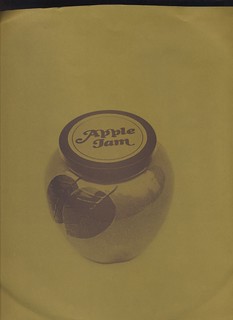 fig. a: George's Apple Jam
fig. a: George's Apple JamBut, when it comes to making tasty jams (or jellies, as the case may be) of our own, we've been singularly focused on crabapples of late.
 fig. b: crabapples
fig. b: crabapplesIn part, that's because there's nothing quite like crabapple jelly: that colour, that tartness, that natural set. Most other jellies are either notoriously finicky, or they're just not nearly as pretty.
But, mainly, it's because we've had access to a particularly fruitful crabapple tree. When the wild turkeys haven't been shaking it down (literally), we've been free to harvest this tree to our hearts' delight.
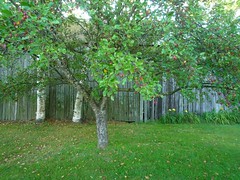 fig. c: crabapple tree
fig. c: crabapple tree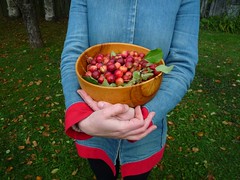 fig. d: freshly picked crabapples
fig. d: freshly picked crabapplesAt work, Michelle makes large quantities of crabapple jelly to serve with terrines, mousses, and pâtés. With these crabapples, she makes small batches of jelly to spread on our toast. Either way, the method is essentially the same.
Crabapple Jelly à la Michelle
Stem, clean and sort through the crabapples, removing any that are rotten.
Place in a medium/large pot, depending on how many apples you have.
Just barely cover with water. You should be able to press down on them, getting the water to cover them when you do.
Cook for 20-25 minutes at a simmer until your crabapples are falling apart and fragrant.
Pour through a chinois and let drip.*
For every 10 parts juice, add 6-7 parts sugar, depending on the tartness of your crabapples.
Place the juice and sugar in an appropiately sized pot, bring to a simmer, and cook at a simmer until you reach the gel stage.
A drop of liquid should come off the spoon in a sheet rather than a droplet.
Place in sterilized jars and seal according to proper canning procedures. Or simply pour into any clean glass container and let set, then store in the fridge.
Voilà!
* You can also use a jelly bag for this step, but Michelle prefers to use a chinois because it speeds up the process.And, either way, the results are beautiful--to the eye, and to the palate.
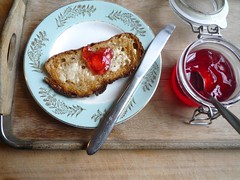
 figs. e & f: crabapple jelly for breakfast
figs. e & f: crabapple jelly for breakfastOf course, it pays to have homemade bread on hand to enjoy your jelly with,
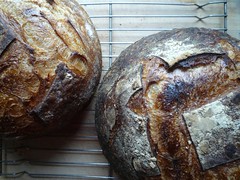 fig. g: pain de campagne
fig. g: pain de campagnebut that's another story.
Act fast: crabapple season is already in full swing.
aj








1 comment:
That looks beautiful!
Post a Comment